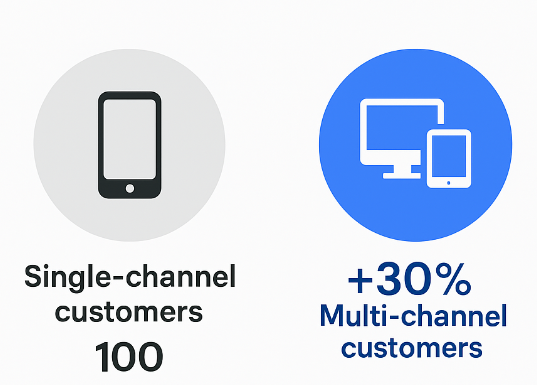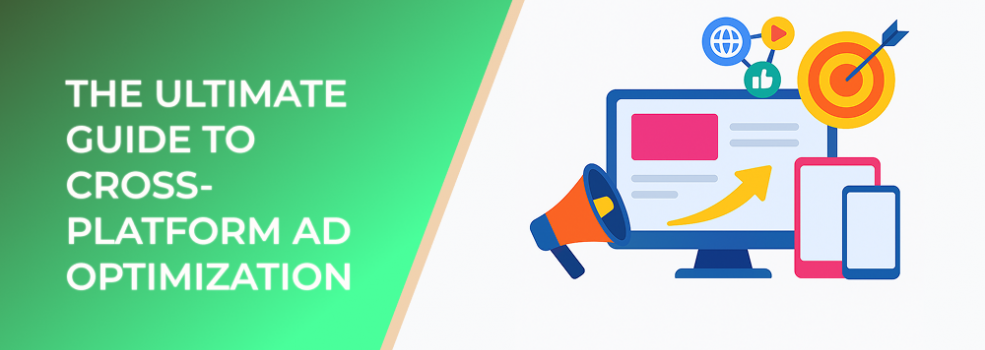The Ultimate Guide to Cross-Platform Ad Optimization
Learn how to unify campaigns across channels, leverage data, and create consistent brand experiences that drive conversions.
In today’s fragmented digital landscape, consumers engage with brands across multiple platforms—from Facebook and Instagram to Google, YouTube, and even emerging channels like TikTok or LinkedIn Ads. To reach audiences effectively, marketers must go beyond running isolated campaigns. They need to embrace cross-platform ad optimization: the process of integrating, analyzing, and refining campaigns across every channel to achieve better results and a unified customer experience.
According to recent studies, 73% of consumers use multiple channels during their purchase journey, and campaigns spanning three or more platforms can increase purchase rates by up to 287% compared to single-channel efforts. Cross-platform optimization is no longer optional—it’s essential for maximizing ad efficiency and ROI.
Why Cross-Platform Optimization Matters
Modern consumers expect consistency. They might see your ad on Facebook, search your product on Google, and complete the purchase after watching a YouTube review. Without cross-platform coordination, your message risks becoming inconsistent, redundant, or inefficient.

Using three or more channels in a campaign can result in a +287% higher purchase rate over single-channel efforts
A data-driven cross-platform strategy helps marketers:
-
Reduce wasted ad spend by eliminating audience overlap.
-
Improve attribution accuracy, revealing which channels truly drive conversions.
-
Enhance customer experience with cohesive messaging and visuals.

Consumers engaging with multiple channels spend on average 30% more than single-channel users
A recent LeadEnforce report found that brands using cross-platform targeting achieved up to 42% higher ROI versus those relying on single-channel ad delivery.
Steps to Effective Cross-Platform Ad Optimization
1. Centralize Your Audience Data
The first step is to unify your customer data. Platforms like LeadEnforce Audience Builder help consolidate user profiles and behavioral signals into one place, ensuring you target the right people across all channels. By syncing your CRM and analytics data, you can build more precise audience segments.
2. Maintain Consistent Creative Identity
While each platform has unique formats and user expectations, your visual identity and brand message should remain consistent. Keep your color schemes, logo usage, and tone aligned so users instantly recognize your brand wherever they see your ads.
3. Use Platform-Specific Optimization
Even within a unified strategy, optimization must respect each channel’s nuances:
-
Facebook/Instagram: Optimize for engagement and conversions using dynamic creatives.
-
Google Ads: Refine keyword intent and adjust bids for high-value segments.
-
LinkedIn: Focus on B2B retargeting with personalized messaging.
-
YouTube: Test video lengths and CTAs to maximize watch-to-click ratios.
4. Track Cross-Channel Attribution
Effective optimization depends on accurate data. Use multi-touch attribution models to understand which platforms contribute most to conversions. Instead of relying on last-click data, adopt holistic measurement that values each channel’s role in the customer journey.
5. Automate and Test Continuously
Use automation tools to run A/B tests, rotate creatives, and adjust bids in real time. According to industry benchmarks, brands that test and optimize weekly see up to 35% higher conversion efficiency than those that optimize quarterly.
Key Metrics to Monitor
To evaluate your cross-platform strategy, track:
-
Cross-channel ROI (total revenue / total spend across all platforms)
-
Frequency overlap (how often users see your ads across different platforms)
-
Cost per acquisition (CPA) per platform and total blended CPA
-
Conversion path length (number of touchpoints before purchase)
These insights help identify underperforming channels and opportunities to reallocate budget dynamically.
Final Thoughts
Cross-platform ad optimization transforms scattered campaigns into cohesive, high-performing ecosystems. By combining audience insights, creative consistency, and intelligent attribution, brands can reduce wasted spend and amplify every marketing dollar.
Suggested Articles to Read Next
If you found this guide useful, explore these related articles from LeadEnforce:

